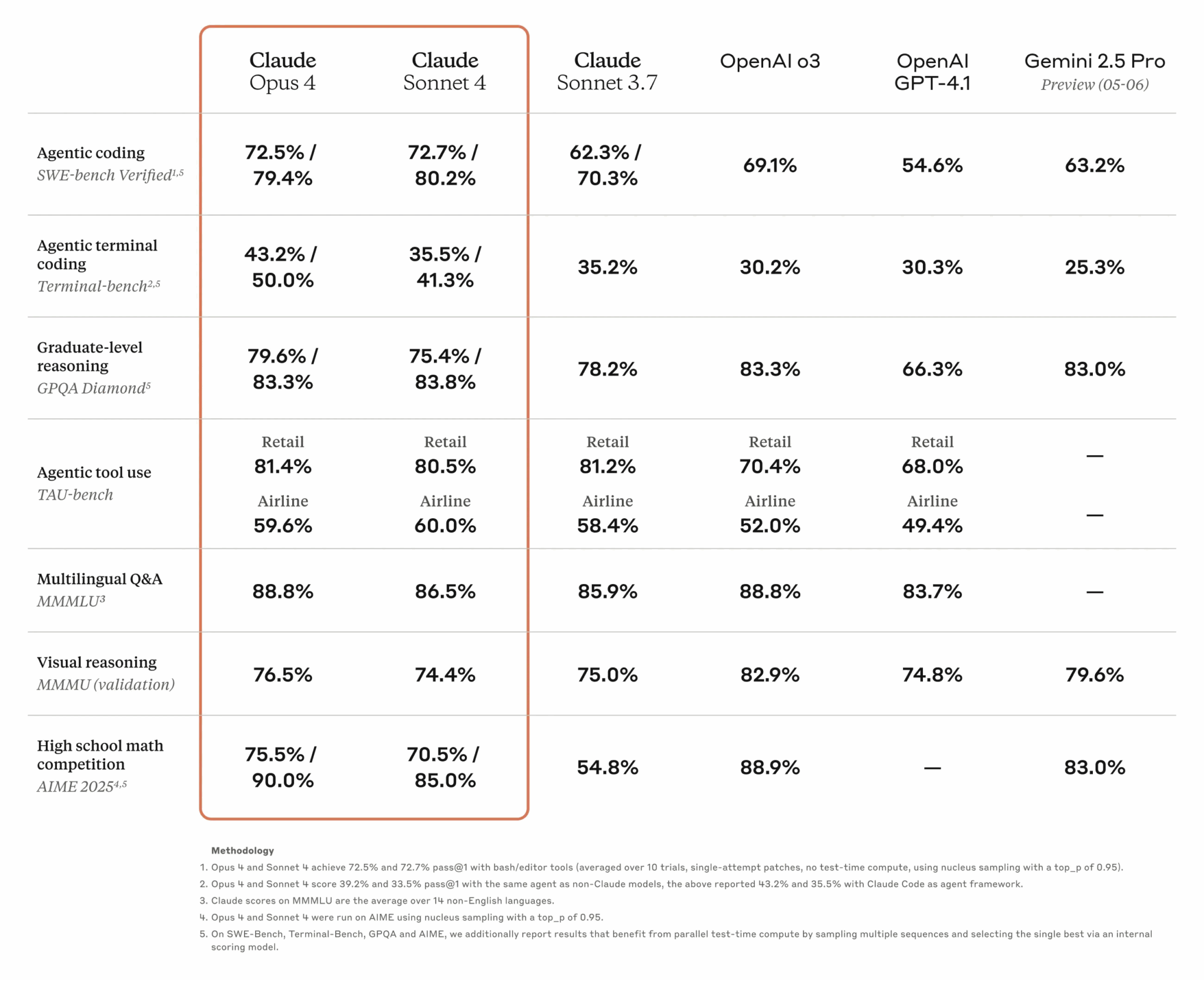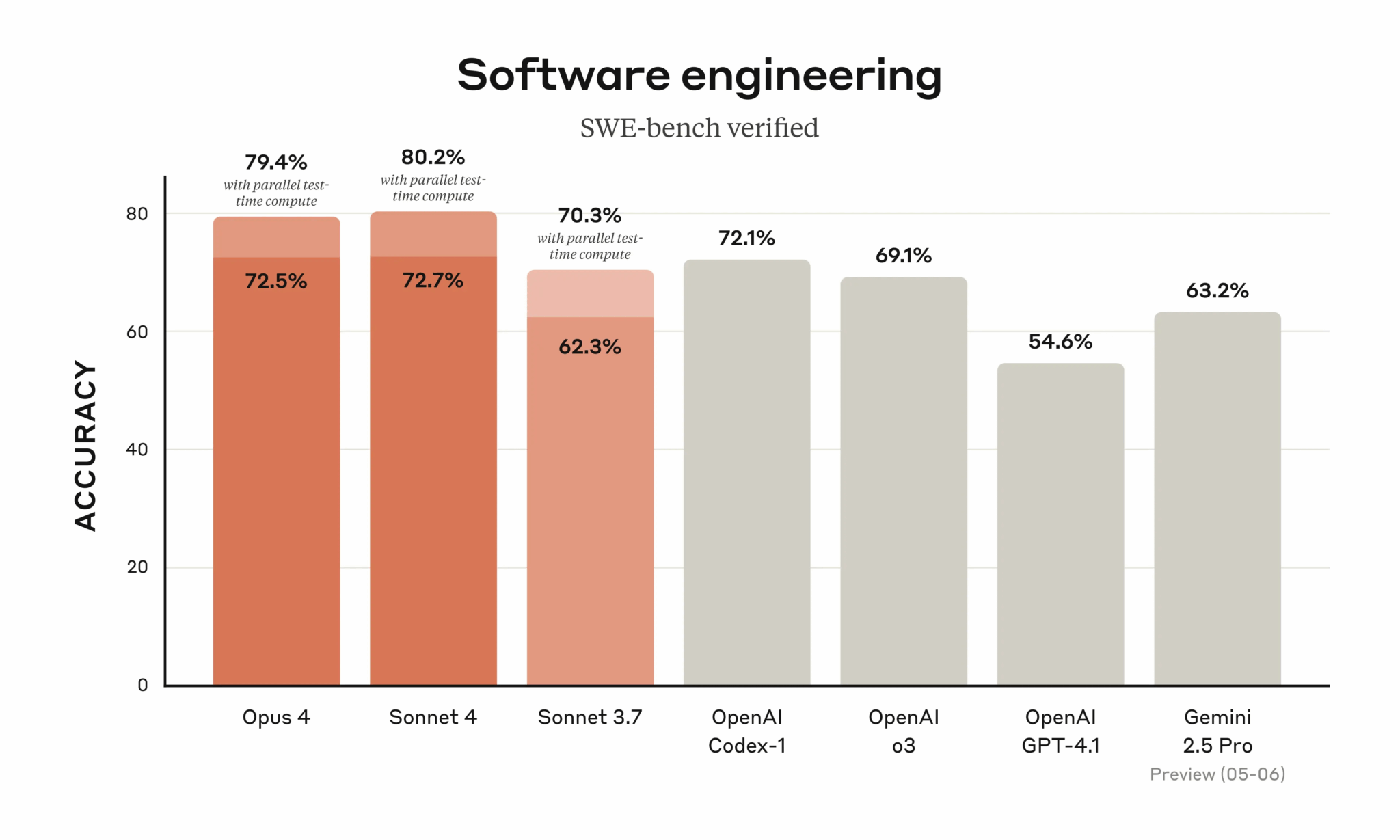Claude 4 Is Here: 10 Big Changes You Should Know

Anthropic has finally unveiled its much-awaited Claude 4 AI model, which includes two models, Claude Opus 4 and Claude Sonnet 4. As expected, these models are said to deliver better AI coding, reasoning, and agentic workflows. In this article, we have listed 10 key takeaways from the launch that you should know about. So, without further ado, let’s jump right in.
1. Claude Opus 4 Claims Top Spot in Coding AI

According to Anthropic, Opus 4 is now the best coding model available. It leads industry benchmarks with 72.5% on the SWE-bench and 43.2% on the Terminal-bench. The model is built to handle long-running, complex coding tasks and agent workflows with sustained performance for hours.
2. Extended Thinking with Tool Use Arrives in Beta
Interestingly, both models now support “extended thinking,” where they can alternate between reasoning and using tools like web search to improve responses. This helps the model give more deep and accurate answers, especially on multi-step problems.
3. Parallel Tool Use and Memory Capabilities Introduced
Anthropic has also introduced multiple tools in parallel and access local files (with permission) to extract and store key information in Claude 4 models. This is said to maintain memory across sessions and enables better long-term task handling.
4. Claude Code is Now Generally Available
Anthropic’s AI coding assistant, Claude Code, is finally available for everyone. It can integrate directly with VS Code and JetBrains. It also shows suggested edits inline and supports background tasks through GitHub Actions.
5. Claude Sonnet 4 Gets a Big Boost Over 3.7

Sonnet 4 improves on the already strong Sonnet 3.7. It now claims to have better instruction following, reasoning, and coding. It hits 72.7% on the SWE-bench and is designed to balance power and speed for more practical, everyday use cases.
6. New API Capabilities for Developers
The company is adding four new capabilities to its API. These include a Code execution tool, an MCP connector, a Files API, and Prompt caching for up to one hour. According to the company, these are aimed at developers building more complex agents and applications.
7. Developer Tools Expand with Claude Code SDK
The Claude Code SDK allows developers to build custom tools and agents using the same core as Claude Code. There’s also a GitHub integration in beta that allows Claude to directly respond to PR feedback and fix CI errors.
8. Pricing and Availability Remain Consistent
Both the Claude 4 models are available through Anthropic API, Amazon Bedrock, and Google Cloud Vertex AI. However, the best part is that pricing remains the same: Opus 4 costs $15 (input) / $75 (output) per million tokens, and Sonnet 4 is available at $3 (input) / $15 (output) per million tokens. Apart from that, Sonnet 4 is available to free users.
9. Massive Cut in Shortcut Behavior
According to the shared press release, the new models are 65% less likely to exploit shortcuts or loopholes in agentic tasks. This makes them more reliable in high-stakes or automated environments.
10. Thinking Summaries and Developer Mode
In order to manage long chains of reasoning, Claude is now using smaller models to create “thinking summaries” in about 5% of cases. If you need full reasoning chains for prompt engineering, the company also offers Developer Mode. However, it’s only available upon request.
Those were all the major updates from the Claude 4 launch. With all these updates, it is clear that Anthropic is also not behind in the AI race. With tool use, extended memory, and deeper IDE integrations, Claude 4 is Anthropic’s step toward building a truly useful AI collaborator.
